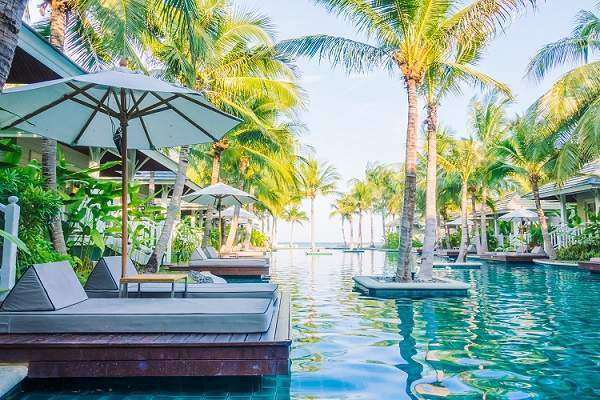
In recent years, there has been a growing emphasis on adopting Eco-friendly practices in various aspects of our lives, and swimming pools are no exception. If you’re a pool owner looking to reduce your environmental impact and save on energy costs, here are some effective strategies to make your pool more Eco-friendly and energy-efficient.
1. Optimizing pool circulation
One of the key aspects of a well-functioning and energy-efficient pool is its circulation system. Start by ensuring that your pool pump is properly sized for your pool’s volume. A pump that is too large will waste energy, while an undersized pump will not effectively circulate the water. Consider investing in a variable-speed pump, which allows you to adjust the speed based on your pool’s needs. This can result in significant energy savings without compromising water quality. Next, check for any leaks in the pool’s plumbing system. Even small leaks can cause the pump to work harder, consuming more energy. Regularly inspect and repair any leaks to maintain optimal efficiency.
2. Adding pool covers when needed
Using a pool cover is a simple yet effective way to conserve energy and reduce water evaporation. A pool cover acts as a barrier, preventing heat loss and reducing the need for heating. Additionally, it prevents debris from entering the pool, reducing the workload on your filtration system. By utilizing a pool cover consistently, you can significantly reduce your energy consumption and maintenance requirements, while also preserving water resources.
3. Energy-efficient pool equipment
Older pool equipment such as heaters, filters, and lighting systems tend to be energy-intensive. Consider upgrading to more energy-efficient alternatives to reduce your pool’s carbon footprint. For example, solar-powered heaters use renewable energy from the sun to heat your pool, making them an environmentally friendly choice. LED pool lights are another great option, as they consume less energy and have a longer lifespan compared to traditional incandescent lights.

4. Smart water management
Efficient water management plays a crucial role in making your swimming pool Eco-friendly. Minimize water wastage by avoiding overfilling the pool and regularly checking for leaks. Consider installing a rainwater harvesting system to collect and use rainwater for non-potable purposes, such as pool top-ups and irrigation. This reduces your reliance on the municipal water supply and conserves this precious resource.
5. Eco-friendly pool chemicals
Traditional pool chemicals can be harsh on the environment and potentially harmful to swimmers. Explore Eco-friendly alternatives, such as chlorine-free or mineral-based sanitizers. These options are gentler on the skin and eyes and are less harmful to aquatic ecosystems when discharged. Additionally, consider using natural enzymes and clarifiers to maintain water quality and reduce the need for excessive chemical treatments.
6. Optimizing pool lighting
If you have outdoor lighting around your pool area, it’s important to choose energy-efficient options. LED lights are an excellent choice for poolside illumination, as they consume significantly less energy compared to traditional incandescent or halogen bulbs. Consider installing motion sensors or timers to ensure that lights are only activated when needed, reducing unnecessary energy consumption.
7. Tracking pool energy usage
To truly understand the impact of your efforts in making your swimming pool more Eco-friendly, it’s essential to monitor and track your pool’s energy usage. Install a pool energy monitor or use a smart home energy management system to monitor and analyze your pool’s energy consumption patterns. This data can help you identify areas where improvements can be made and optimize your Eco-friendly strategies accordingly. By staying informed about your pool’s energy usage, you can make informed decisions and further enhance its energy efficiency.
8. Considering an enclosed pool
Considering an enclosed pool is a wise choice for those seeking to maximize energy efficiency and extend the usability of their pool throughout the year. Enclosing the pool area with a retractable or permanent structure helps to retain heat, reduce evaporation, and minimize the impact of external weather conditions. With an enclosed pool, you can significantly reduce energy consumption by requiring less heating or cooling, as the structure acts as a barrier against heat loss and prevents the intrusion of cold air. Enclosing the pool during professional pool renovations also provides additional benefits such as enhanced safety, protection from debris, and a more private swimming environment.
9. Adding plants around the pool
Adding plants or windbreaks around the pool area is a fantastic way to enhance its Eco-friendliness and create a more inviting atmosphere. Planting trees, shrubs, and hedges strategically can serve as natural windbreaks, reducing wind exposure and minimizing heat loss from the pool surface. These windbreaks not only provide a more comfortable swimming environment but also contribute to energy conservation by reducing the need for excessive heating. Carefully selected plants can offer shade, reducing direct sunlight on the pool and helping to regulate water temperature naturally. Choosing native plants that require less water and maintenance further promotes sustainability.
Conclusion
Transforming your pool into an Eco-friendly and energy-efficient space requires a combination of Eco-conscious choices and responsible practices. By implementing these strategies, from optimizing circulation systems to embracing natural landscaping, you can minimize your pool’s environmental impact while enjoying a sustainable swimming experience. With the right tools at your side, you’ll have an Eco-friendly pool you can enjoy for years to come.